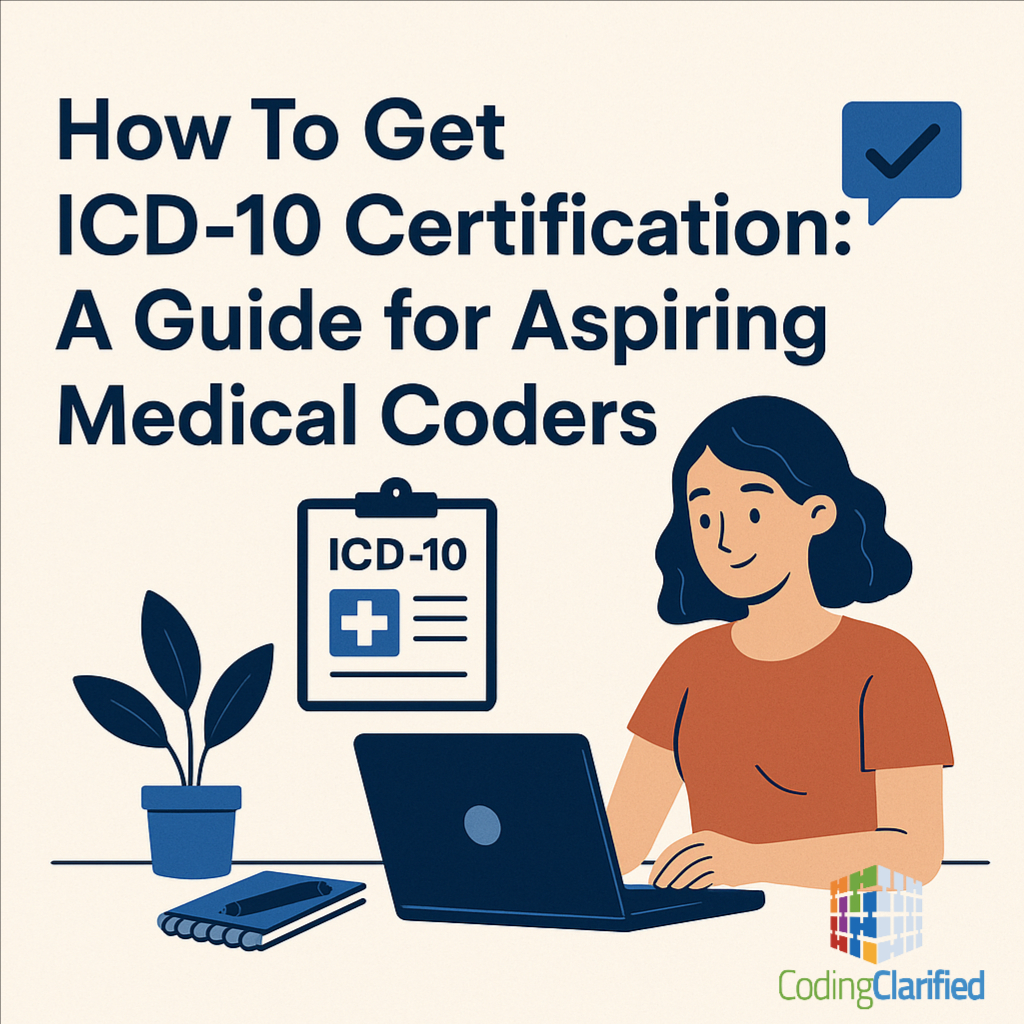How To Get ICD-10 Certification: A Guide for Aspiring Medical Coders
ICD-10 (International Classification of Diseases, 10th Revision) is the current diagnostic coding standard used across the U.S. healthcare system. If you’re aiming for a career in medical coding or healthcare data management, earning an ICD-10 certification is a valuable step toward professional recognition and job readiness.
What Is ICD-10 Certification?
ICD-10 certification demonstrates that you have a solid understanding of the ICD-10-CM (Clinical Modification) and ICD-10-PCS (Procedure Coding System) coding structures. These systems are used to report diagnoses and inpatient procedures for billing, data analysis, and compliance.
While there is no single universal “ICD-10 certification,” several recognized organizations offer credentials that include ICD-10 proficiency as a core component.
Why Is ICD-10 Certification Important?
-
Increases employability: Employers look for coders who understand ICD-10.
-
Demonstrates expertise: Especially valuable if you’re applying for hospital or inpatient coding positions.
-
Supports career advancement: Sets a foundation for specialized certifications like CCS (Certified Coding Specialist) or CIC (Certified Inpatient Coder).
-
Ensures coding accuracy: Reduces errors in claims and supports proper reimbursement.
Certification Options That Include ICD-10 Training
Here are the most popular pathways to get ICD-10 certified:
AAPC Certifications
-
CPC® (Certified Professional Coder) – Focuses on outpatient coding but includes ICD-10-CM.
-
CIC™ (Certified Inpatient Coder) – Includes both ICD-10-CM and ICD-10-PCS for hospital coding.
-
CRC™ (Certified Risk Adjustment Coder) – Heavy on ICD-10-CM for chronic condition coding.
AHIMA Certifications
-
CCA® (Certified Coding Associate) – Entry-level certification that includes ICD-10 training.
-
CCS® (Certified Coding Specialist) – Advanced credential focusing on ICD-10-CM and ICD-10-PCS for inpatient settings.
-
CDIP® (Certified Documentation Improvement Practitioner) – For experienced professionals working with ICD-10 documentation integrity.
Steps to Get ICD-10 Certified
Step 1: Choose the Right Credential
Decide if you want outpatient (CPC), inpatient (CIC or CCS), or documentation-focused certification.
Step 2: Take a Training Course
Enroll in an ICD-10-CM/PCS coding course through:
AAPC Coding Clarified course
Coding Clarified Medical Coding course includes the following:
Access to the online medical coding course using the AAPC-approved curriculum
CPT, ICD10, HCPC, Workbook & Textbook
Instructor audio/video files for each chapter to implement notes into your manuals
1:1 time with instructor as needed
Professionally written resume
AAPC Membership
CPC Exam Voucher
Job placement assistance/resources
Online HCC Internship
Free 50-Question Practice Exam
Practicode
https://codingclarified.com/mastering-online-medical-coding-training/
Step 3: Practice With Real Coding Scenarios
Hands-on practice using coding software, manuals, and sample patient cases is key to success.
Step 4: Take the Certification Exam
Register for and pass the exam related to your chosen credential. Most tests are proctored and can be taken in person or online.
Step 5: Maintain Your Certification
Most credentials require CEUs (Continuing Education Units) to stay current. Stay up to date with coding changes and renew annually or biennially as required.
Tips for Success
-
Study ICD-10 guidelines thoroughly — they’re testable!
-
Use the official ICD-10-CM and PCS code books.
-
Give yourself plenty of time to prepare, especially if you’re new to coding.
-
Join online forums, webinars, or study groups.
ICD-10 certification is a strategic investment in your medical coding career. Whether you’re just starting or looking to specialize, mastering ICD-10 will enhance your skill set and open doors to more advanced roles.

